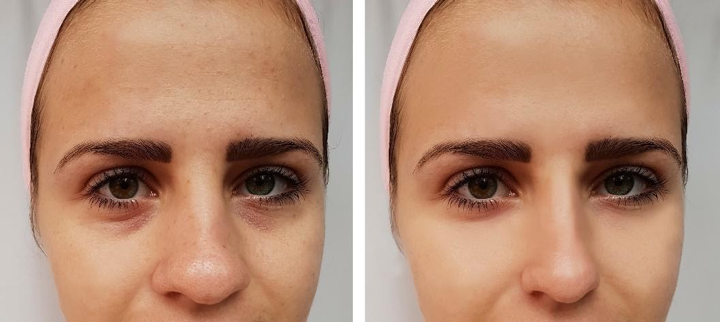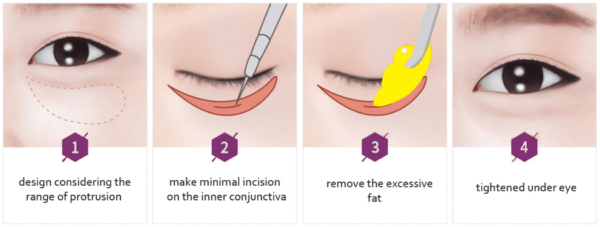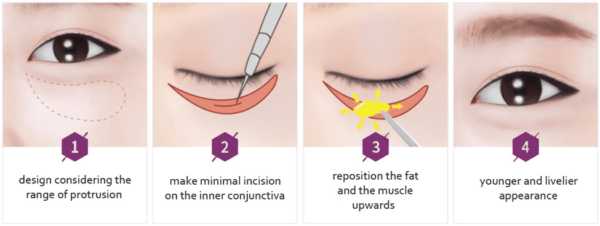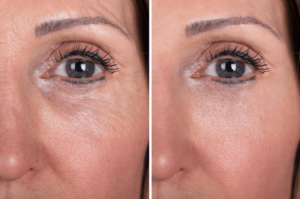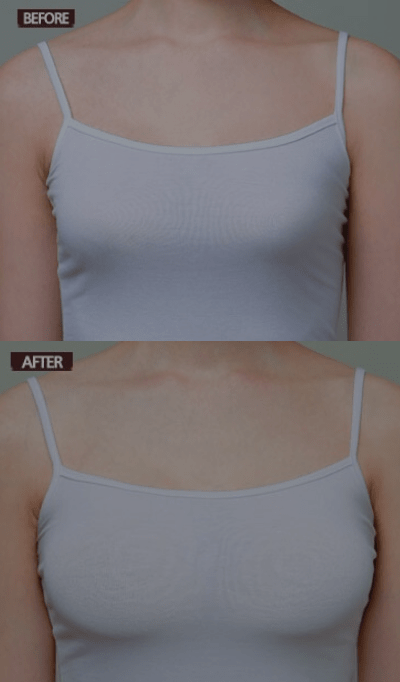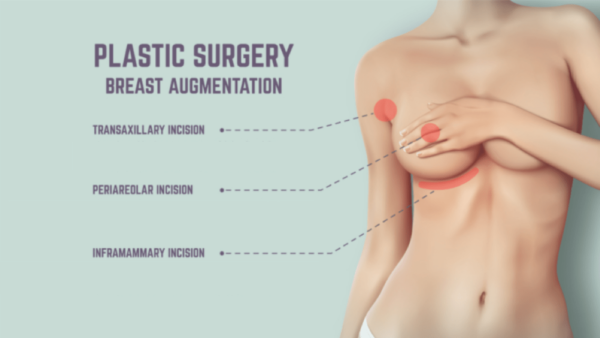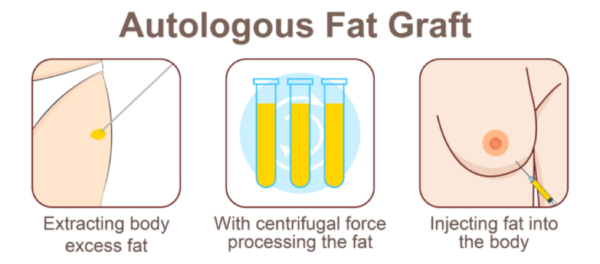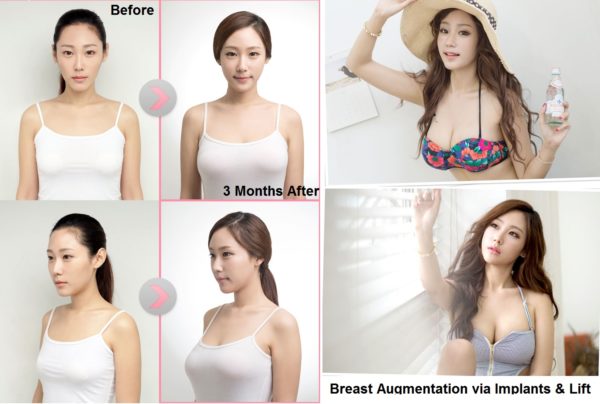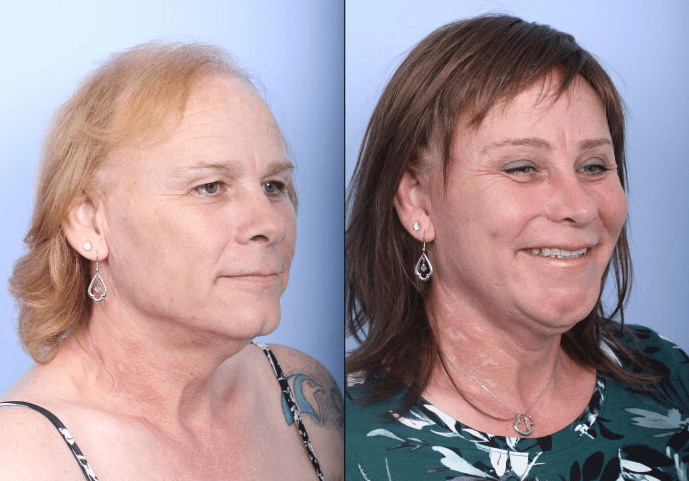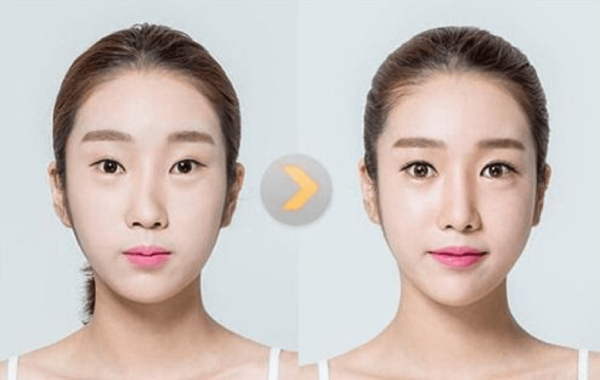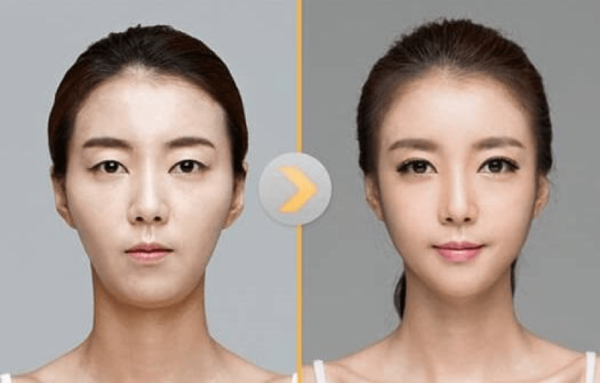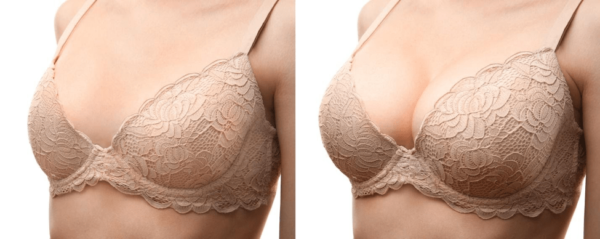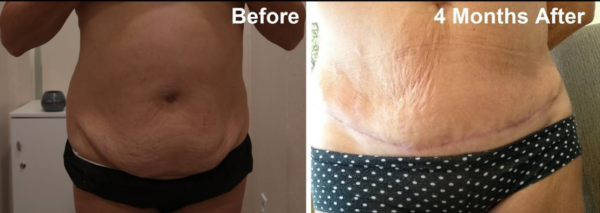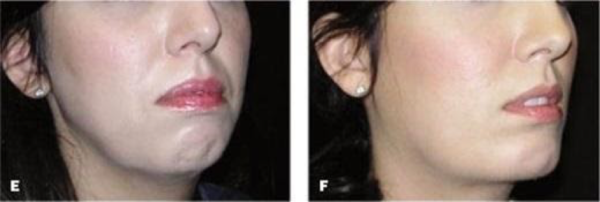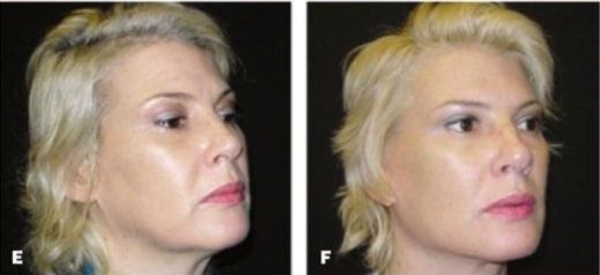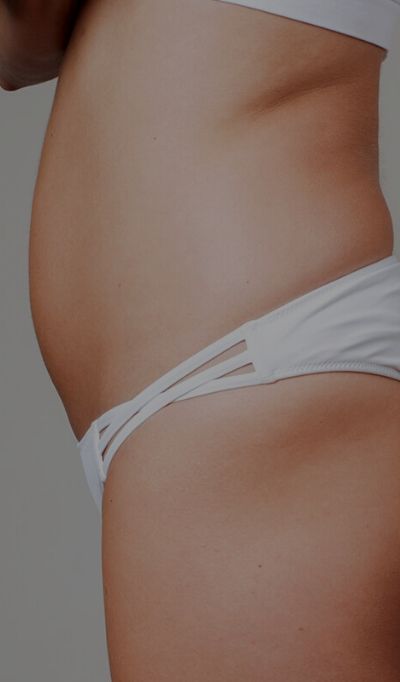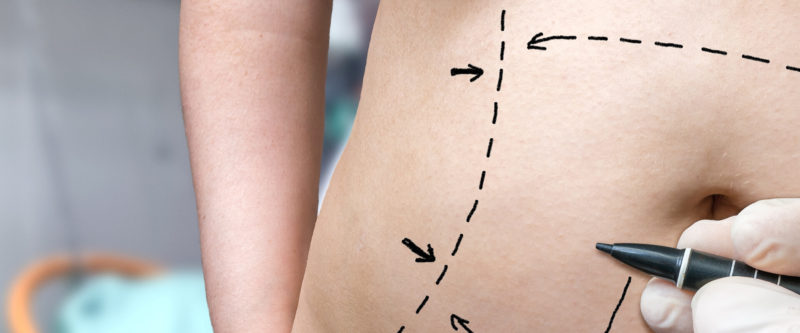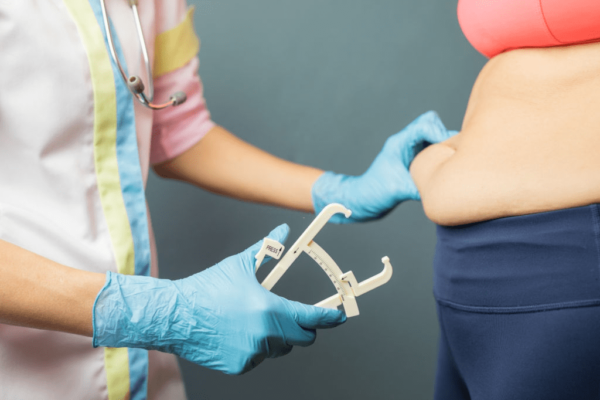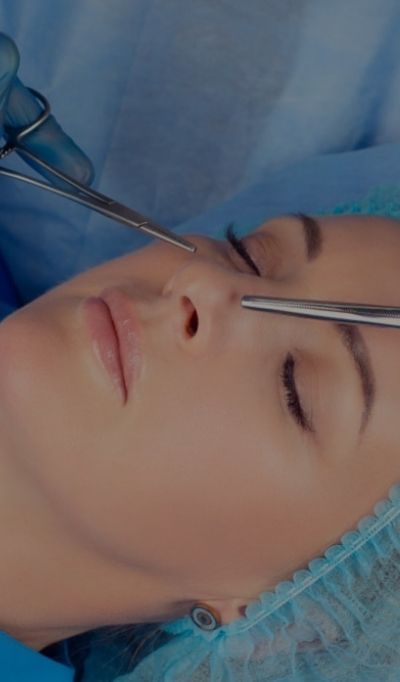
The nose is a major part of our everyday life, both aesthetically and functionally. The nose makes up about 1/3 of the face and plays a significant role in how symmetric someone’s face appears overall. It also enables us to breathe comfortably and have things like a good night’s rest. It can become an area of fixation for someone who dislikes their nose and cause insecurity, as well as cause physical discomfort if it is not functioning properly. If you feel that your nose has been hindering you or holding you back, considering a nose job also known as Rhinoplasty may be an appealing solution for you.

What is a Nose Job?
This is considered an ‘umbrella name’ for a variety of operations that involve changing the nose shape, meaning it is not specific to one kind of surgery, but any that include operating on the nose. There are two main ways to categorize most nose jobs, being either cosmetic or functional. Cosmetic procedures are those that are done simply because you are dissatisfied with the appearance of your nose, and would like to change it, but the nose functions as usual. Functional procedures are those that are done because the nose does not work correctly, which can cause issues, particularly when breathing.
Functional procedures can often be combined with cosmetic procedures. Often, when correcting a functional issue, a more preferred nose shape is also achieved. Once this distinction has been made, there are a variety of procedures that you can choose from for a nose job, which will be discussed further along. However, often when people are referring to nose jobs, they usually are referring to rhinoplasty, which will also be addressed.
Surgery in Korea in Korea
A quick discussion about plastic surgery throughout history quickly shows how South Korea came to be recognized as the plastic surgery capital of the world. Beginning with the first World War, the field of plastic surgery came to be invented by a man named Harold Gillies. He created the field by helping to reconstruct the faces of soldiers who had suffered from the war. He was, however, limited since, at the time, Europe didn’t see the field as ‘necessary.’ Later, he took on an apprentice named Ralph Millard, who took over as a successor of the field by the second World War.
This all is relevant because later, Millard came to South Korea for the Korean War. Due to the limited restrictions, he was able to innovate many of the techniques practiced today on soldiers who had been disfigured at the time. Since then, plastic surgery exploded throughout South Korea, and often the country has been trendsetting in different methods used nowadays.
Surgical vs. Non-surgical Nose Job
1) Surgical Nose plastic Surgery
a) This method has two main approaches that used to be somewhat of a debate, but lately, there have been efforts in the scientific community to ‘simplify’ rhinoplasty. The general idea is to simplify the process to reduce the need for revision cases later, as there has been a noticeable trend in the rise of revision cases with the more options being introduced. Therefore, the two main incision site approaches are:
-
- Open (transcolumellar)
- This has been the approach that most surgeons have begun leaning towards in efforts to simplify the procedure. This is because it allows full view and access to the structures inside the nose. This enables the surgeon to see all options and the best approach for each nose, particularly in more complicated cases or revision cases. However, the incision site is located on the bottom of the nose, on the column that separates the two airways. A scar may be left, though this is unlikely, and it would be virtually invisible once recovered, as seen below.
- Open (transcolumellar)

2. Closed (endonasal)
-
-
-
-
- This method is becoming less frequently used due to the difficulty the plastic surgeon has viewing the structures of the nose. Therefore, if this method is used, it is generally used for more uncomplicated cases. An advantage of this method is the fact that all incisions are made inside of the nose, so that no scars will be visible.
- This method is becoming less frequently used due to the difficulty the plastic surgeon has viewing the structures of the nose. Therefore, if this method is used, it is generally used for more uncomplicated cases. An advantage of this method is the fact that all incisions are made inside of the nose, so that no scars will be visible.
-
b) The main issues that are addressed with surgical nose jobs are a dorsal hump, a wide tip, or a crooked nose.
-
-
2) Non-Surgical Nose Plastic Surgery
b) This method is something to consider if you are someone who does not want to have surgery, is worried about the expenses of operation, or is unsure about fully committing to a procedure. It involves no downtime, as no actual surgery is performed. It is important to mention that this method will not reduce the size of your nose. Still, it can address problems such as humps or adding volume, and often addressing these issues has the effect of seeming to reduce the size of the nose due to the increased symmetry.
Liquid rhinoplasty is an option in which a filler is injected into the site that needs to be smoothed out or have volume added in. The main downside of this treatment is that it is not permanent; therefore, you will need maintenance treatments to keep your results.
Nose Plastic Surgery Procedure
This varies between surgical and non-surgical, but both will be addressed below.
1) Surgical
a) A benefit to the surgical method is the ability to use devices such as grafts, which help create a more defined nose. Examples of grafts include alloplasts, homografts, and autografts. Each come with their share of advantages and disadvantages, but it is found the least likely to cause complications are autografts.
-
- Open
- This procedure generally takes longer since most operations involving this method are more complicated.
- The surgeon will cut along the columellar, as well as the inside of the nostrils, as shown below.
- Then skin and muscle will be pulled back to allow a full view of the structures.
- Depending on what procedure(s) you chose, the plastic surgeon will continue with the procedure at his discretion.
- The nose will be wrapped in a splint to protect it until it is less likely to move from the chosen position.
- Open
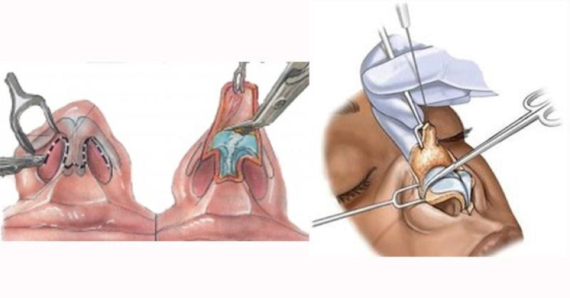
2. Closed
-
- This method is used for more straightforward procedures; therefore, it generally takes less time to perform.
- The surgeon will create incisions inside of the nose on the columellar, as shown below.
- They will then proceed with the procedure(s) at their discretion.
- The nose will be wrapped in a splint to prevent it from moving.

1) Non-Surgical
a) Liquid rhinoplasty
-
- No anesthesia is required; however, local anesthesia is available at the patients’ request.
- The total time is 15-20 minutes.
- The area will be sterilized to avoid any infection, and then the surgeon will inject the filler of your choice until the desired shape and volume is achieved.
Nose Job Recovery
1) Surgical
Immediately after surgery, expect the nose and parts of the face to experience swelling and bruising, particularly underneath the eyes. It is also not uncommon to experience uneven swelling in different parts of the face. It is essential to ice the area for the initial days after surgery, as well as sleeping with the head elevated to help with drainage and swelling.
The swelling and bruising should have largely decreased by the end of the first month; however, there may be some residual swelling for a couple of months afterwards. Therefore, you should be attending all scheduled appointments to make sure the nose is healing correctly. You should also be cautious of touching or any rough movements such as blowing the nose or sneezing. Final results should become visible anywhere from 6 months to a year after the procedure.
2) Non-surgical
There is virtually nothing that you need to do, and results should be mostly visible immediately after surgery, however the nose may set some more after the injections. Maintenance treatments should be done every 4-6 weeks.
Nose Job Before and After
1) Surgical
With this procedure, any issues dealing with the nose can be addressed, particularly if it involves functionality issues, revision, complex first procedures, or any sort of minimizing of an area of the nose.
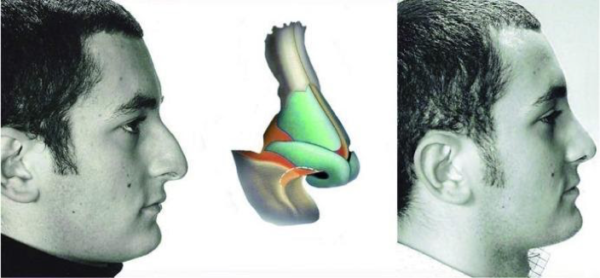
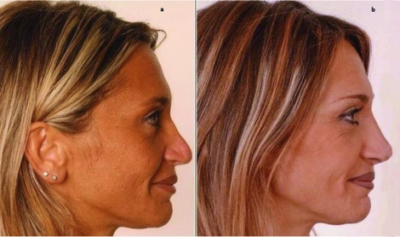
2) Non-Surgical
This is a reminder that though results are commendable, this will not be able to decrease the size of the nose, only help smoothen it.
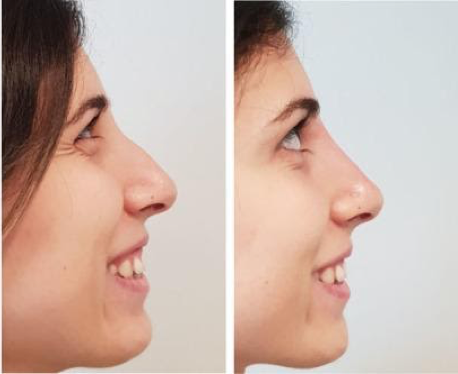
A nose job can be an excellent solution for you if you are dealing with both, or either, a cosmetic or functional issue. The best method between surgical and non-surgical can be chosen between you and your surgeon of choice. However, it is still crucial to choose a board-certified plastic surgeon with plenty of experience in this field. If you are feeling ready to change your nose for the better, feel free to schedule a free consultation with a plastic surgeon through companies like Seoul Guide Medical, who can put you in contact with the top surgeons in South Korea.
FAQ
What types of nose jobs are there?
This is discussed in the article more in-depth, but the two main ways to separate nose jobs are if they are aesthetic or functional. From there, factors such as surgical or non-surgical, open or closed surgery, and if grafts will be needed.
Where to get my nose job?
The main priority should always be finding a board-certified plastic surgeon with plenty of experience in procedures of the nose. Getting plastic surgery in Korea is something worth considering. Due to the high volume of plastic surgery procedures performed in South Korea, specifically of the nose, it is likely that your goals of a nose job will be successfully achieved here.
